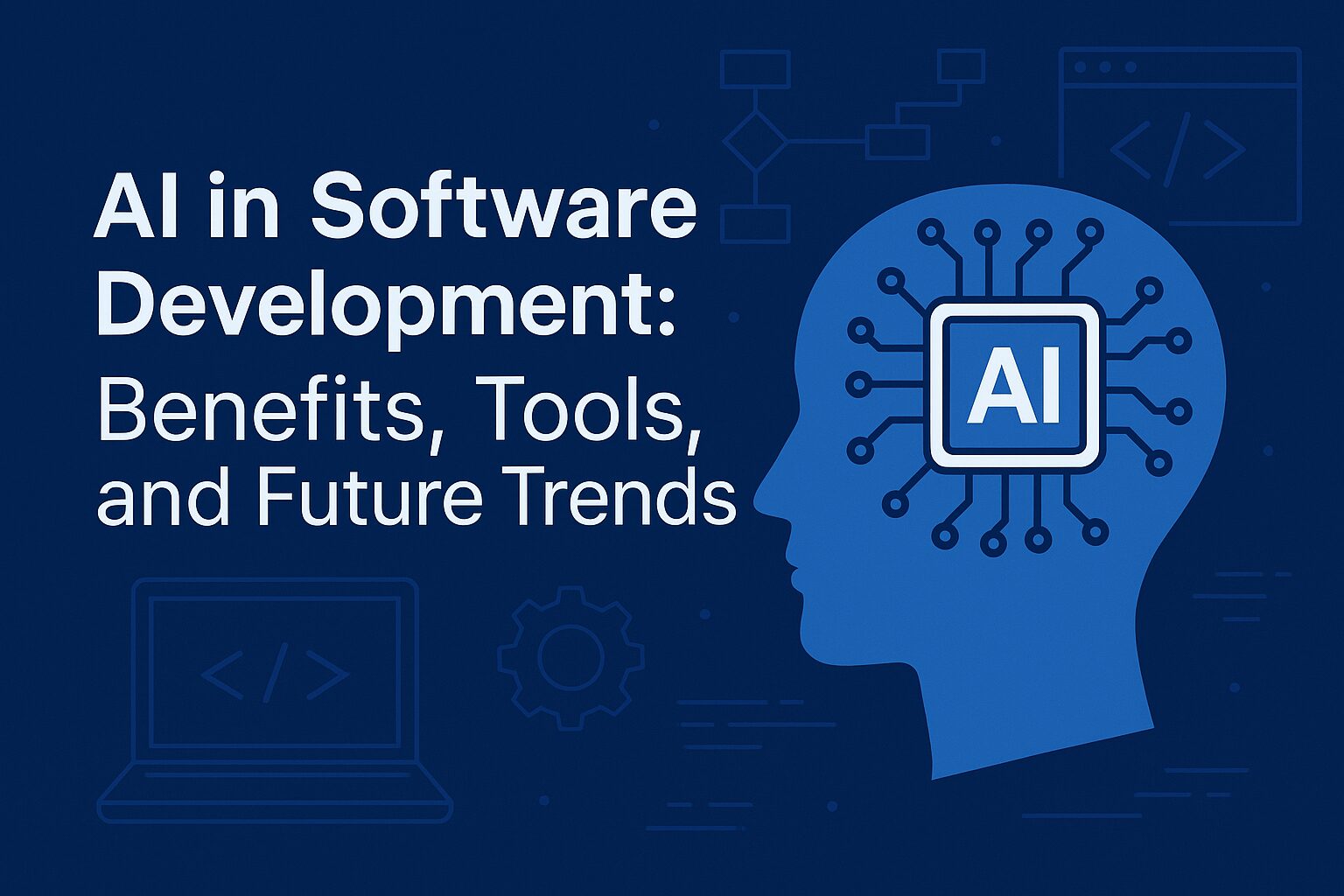Artificial Intelligence (AI) is no longer just a futuristic concept—it’s a driving force behind innovation in nearly every industry, and software development is no exception. From automating repetitive coding tasks to predicting bugs before they occur, AI is transforming how developers build, test, and maintain software. For businesses, this shift means faster delivery, better quality, and lower costs.
In this article, we’ll explore how AI is changing software development, the benefits it offers, popular tools, and the trends shaping its future.
1. The Role of AI in Software Development
Traditionally, software development has been a manual and time-intensive process. Developers write code, test applications, fix bugs, and optimize performance—often juggling multiple tools and processes.
AI changes the game by automating parts of the development lifecycle, offering data-driven insights, and enabling smarter decision-making. Using machine learning models, natural language processing (NLP), and deep learning, AI can:
Write and optimize code
Detect and fix bugs
Automate software testing
Predict performance issues
Personalize user experiences
This doesn’t mean AI will replace developers; instead, it acts as a collaborative assistant, freeing them from repetitive tasks so they can focus on innovation.
2. Key Benefits of AI in Software Development
a. Faster Development Cycles
AI-powered code generation tools like GitHub Copilot or Tabnine help developers write code faster by suggesting relevant code snippets in real time. This reduces development time significantly.
b. Improved Code Quality
AI-driven testing tools can analyze vast amounts of code, detect anomalies, and predict where bugs are likely to occur—improving overall quality before the software goes live.
c. Automated Testing
Instead of manually writing test cases, AI can create, run, and update tests automatically. This leads to continuous testing and ensures every release meets quality standards.
d. Better Project Management
AI tools can predict timelines, identify potential bottlenecks, and allocate resources efficiently—helping teams stay on track and within budget.
e. Cost Savings
By automating repetitive tasks and reducing the risk of costly post-launch bugs, AI helps organizations save both time and money.
3. Popular AI Tools for Software Development
Here are some of the top AI-powered tools transforming the developer workflow:
GitHub Copilot – AI pair programmer that suggests code snippets based on context.
Tabnine – Autocompletes code using deep learning models.
DeepCode – AI-powered code review tool that detects bugs and vulnerabilities.
Testim.io – Automates end-to-end testing using AI.
Codex (OpenAI) – Converts natural language descriptions into functional code.
Amazon CodeWhisperer – Helps developers write secure and optimized code.
These tools integrate with existing IDEs and development environments, making adoption easy for teams.
4. Real-World Applications of AI in Development
a. Predictive Maintenance
In industries like manufacturing, AI-powered software can predict equipment failures before they happen, reducing downtime.
b. Chatbots and Virtual Assistants
AI helps developers create intelligent customer support chatbots that understand context and provide instant responses.
c. Personalized User Experiences
Streaming platforms like Netflix and Spotify use AI to tailor recommendations based on user behavior—powered by AI algorithms in their backend software.
d. Cybersecurity
AI-based systems detect unusual activity, identify potential threats, and prevent cyberattacks in real time.
5. Challenges of AI in Software Development
While AI offers incredible potential, it also presents challenges:
Data Dependency – AI models need large datasets to function effectively, which can be difficult to obtain in niche industries.
Bias in AI Models – If training data is biased, the AI may produce inaccurate or unfair outcomes.
Skill Gap – Developers need training to effectively use AI tools.
Ethical Concerns – Privacy, transparency, and accountability remain key issues in AI adoption.
Organizations must address these concerns with clear policies, ethical guidelines, and proper training.
6. Future Trends in AI-Driven Development
AI’s role in software development is only set to grow. Here are a few trends to watch:
AI-First Development – Future projects will integrate AI from the very start, not just as an add-on.
Explainable AI (XAI) – Developers will focus on creating AI systems whose decisions can be easily understood.
No-Code/Low-Code Platforms – AI will make it possible for non-programmers to create functional applications using natural language.
AI in DevOps (AIOps) – Automating IT operations, monitoring, and incident response using AI.
Conclusion
Artificial Intelligence is revolutionizing the software development landscape by making it faster, more efficient, and more reliable. While challenges remain, the benefits far outweigh the risks. Businesses that embrace AI-powered tools today will have a significant competitive advantage tomorrow.
The future of software development will be a partnership between human creativity and AI efficiency, leading to groundbreaking innovations and better user experiences.







